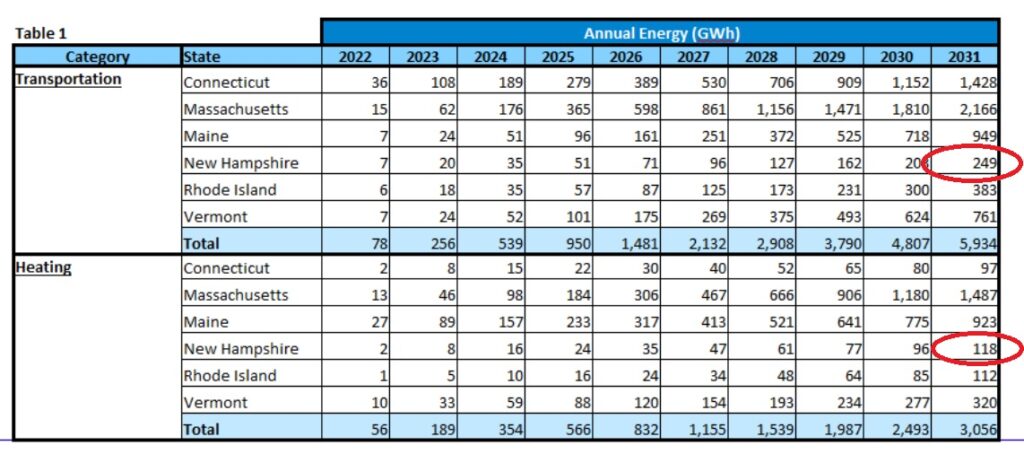The folks who run New England’s power grid estimate that in a decade, behind-the-meter (rooftop) solar and energy efficiency programs will reduce the need for electricity production in the region by about 15%, from 165,000 gigawatt-hours to 141,000 annually.
That’s a lot – hooray for us. But it’s also not a lot, if you consider that Seabrook Station produces about 11,000 GWh. These two methods of eliminating the cost of new transmission lines and need for nat-gas powered plants add up to about 2.4 Seabrooks. It’s much less than the output of the three nuclear plants we have closed (Maine, Vermont and Pilgrim). So it’s nothing to sneeze at but it’s not exactly an upending of the current power system.
These figures come from ISO-NE’s CELT report, which stands for Capacity, Energy, Loads and Transmission. It’s a 10-year forecast, just issued and has lots of details for energy wonks. As a New Hampshire resident who despairs at my looking-backward state, I noticed this chart and had to shake my head. ISO-NE has no hope that New Hampshire will change its foot-dragging ways on electrifying transportation or heating, two sectors that have to change if we have any hope of limiting the damage of climate change.


 Return to the Concord Monitor
Return to the Concord Monitor
Just pitiful. This assumes we can’t wise up, which does seem to be the truth. Gas bags will fight to the end of the world, cheering each other on to doom.